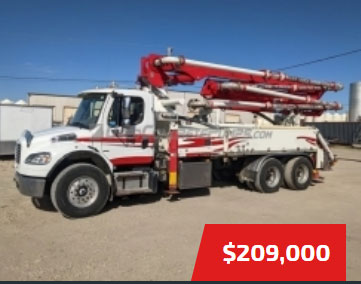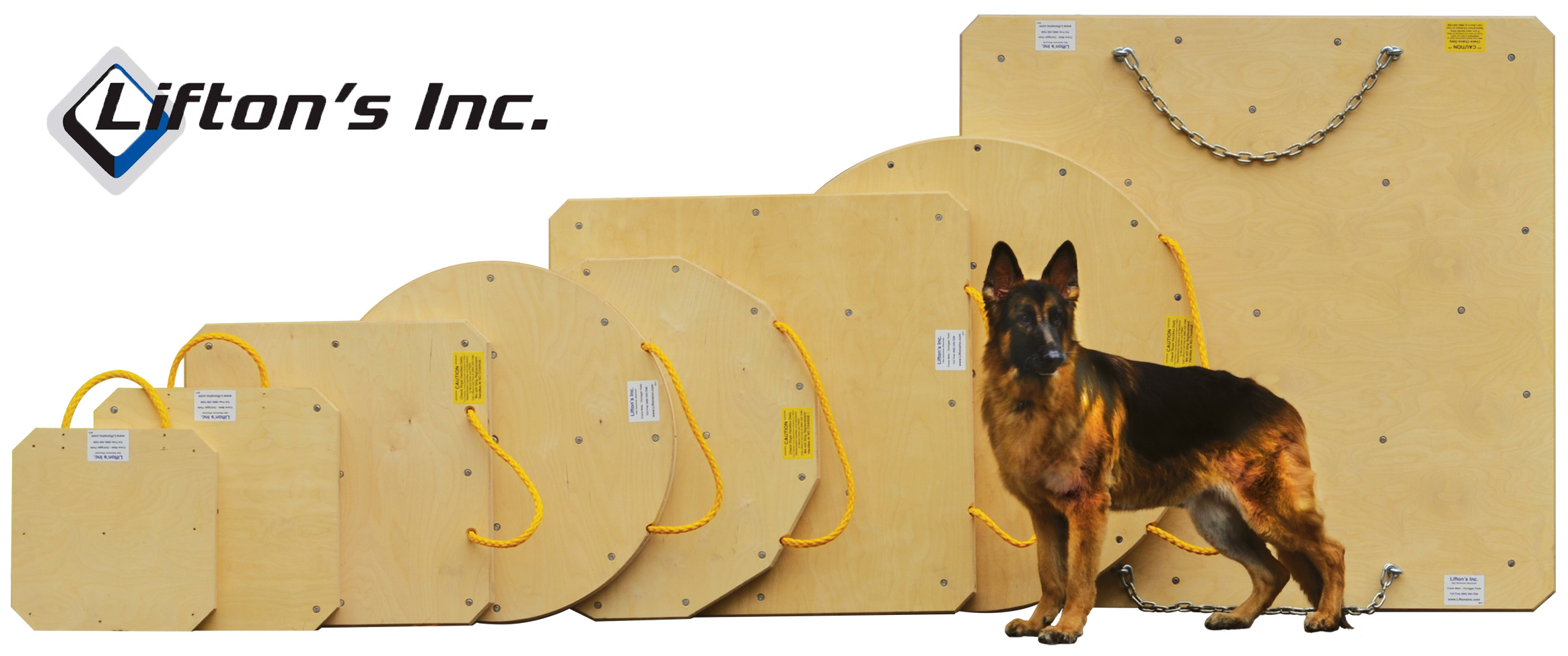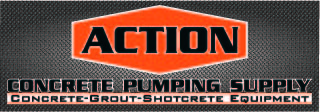| Todd | 09-08-2008 | comment profile send pm notify | ||
|
AMerican Concrete Pumping Association
Safety Bulletin
Contractors may sometimes require or request their concrete pumping company to use a double “S†shaped steel elbow, or other metal devices, when pouring concrete – Figure 1.
The purpose of these devices is to prevent concrete from falling out of the boom pipeline by the force of gravity. Preventing the free fall of air-entrained concrete is important because it has been shown that concrete that has fallen many feet loses some of the entrained air bubbles upon impact. Any device that concrete can free fall upon (such as a dish) will cause significant loss of entrained air, and could have serious effects on the durability of the concrete. However, the ACPA does NOT recommend the use of this device or similar devices. Should the hose move laterally, or whip violently from the release of trapped air, the double “S†elbow, or other device, can cause serious and even deadly injury to the person directing the concrete hose and other nearby workers. Figure 2 below shows other methods of keeping the concrete from falling out of the boom by the force of gravity. These alternate methods do not pose a hazard to the workers, and may work better than the double “S†system to prevent loss of entrained air.
|
||||
| Bob | 09-08-2008 | reply profile send pm notify | ||
|
OK sports fans, here it is HOT OFF THE PRESS!!! The ACPA saw our campaign for tip hose safety and graciously sent us their new safety poster. This poster is the official stance of the ACPA, and as such is the only responsible, professional and safe way to operate your pump. Please make a copy of this safety bulletin and carry it in your pump. When a contractor asks you to clamp on one of these killers: JUST SAY NO… in a nice, professional way. Show him the bulletin. If you continue to use these devices and as a result someone is injured; your insurance company lawyer will not have much luck defending the case. Continued use is operation outside of accepted industry safety standard. And that is a lonely place to be. The other thing that makes this industry wide safety campaign so easy to comply with is HOW CAN YOU CLAMP ONE OF THESE ON IF YOUR TIP HOSE HAS NO DISCHARGE COUPLING? Thanks to all of you, ConcretePumping.com, the ACPA and the CPMA we will all have a safer year. Pump like the pros, use a single coupled hose ;~) |
||||
| 38zman | 09-09-2008 | reply profile send pm notify | ||
|
Sure could have used this info yesterday |
||||
| Bob | 09-09-2008 | reply profile send pm notify | ||
|
I thought about your 'problem' ;~) |
||||
| mohd | 09-09-2008 | reply profile send pm notify | ||
|
I could use that tomorrow. thanks |
||||
| kneerick | 09-09-2008 | reply profile send pm notify | ||
|
where have you guys been osha outlawed s bends years a go the only thing worse is an s bend with a handle! there used to cut down on splatter or slow the mud down you know how finnishers hate to get dirty,if you want to use something in place of this try a 3 1/2" hose (con forms) |
||||
| Todd | 09-10-2008 | reply profile send pm notify | ||
|
we are going to do them we are just looking at how we are going to pay for them. Give me a couple more weeks. |
||||
| pudg | 09-10-2008 | reply profile send pm notify | ||
|
that picture to the rite is not the safest way to go when did the acpa forget about steel reducers have they ever seen the effects of hose whipping thru a red hose its better than a double ended but lets not make another problem trying to fix a problem I would not show that to anyone that was truly concerned about safety |
||||
| pudg | 09-10-2008 | reply profile send pm notify | ||
|
and saying a reduction hose does not cause a hazard is like saying smoking doesnt cause lung cancer so I say to the ACPA I lost alot of respect for this organization and be careful what you say does not cause risk to workers,and if this was my website I would not post a bulletin that does NOT state the truth,Bob I truly respect you and your views and as well as Todd and his website but I will not be a part of something we all know is not a safe practice,KEEP YOUR REDUCTIONS IN STEEL,so I wish yall well in this NO DE push but we should not replace one unsafe act with another so I am signing off and you will hear nothing else from me on this subject and let it be known I strongly disagree with this so called safety bulletin |
||||
| ski | 09-10-2008 | reply profile send pm notify | ||
|
hey, you said OSHA outlawed the s-pipe? im having trouble with my boss and the whole DE hose thing. i printed up 15 copies of this and put one in each truck. when i returned that afternoon from a job, i got into a heated discussion over the s-pipe thing. i wont use one nor will i use a DE ever again on my boom. they came back and said,: "we wont lose customers over the s-pipe ordeal,if we lose customers, we'll lose operators too. its been 20 years since we started using the s-pipes and we wont change now!" i was wondering if you could give me the link or web address that shows OSHA's ban of the s-pipe,so i have a leg to stand on next time i get chewed for not using the s-pipe! thx, ski
|
||||
| Bob | 09-10-2008 | reply profile send pm notify | ||
|
Ski, check your email |
||||
| TooTall | 09-10-2008 | reply profile send pm notify | ||
|
Send me an address Todd. I'll bet I might come across a little funding. |
||||
| Raymond | 09-10-2008 | reply profile send pm notify | ||
|
Each state's OSHA rules are a little different. For example, if you look up 'concrete pump' on Washington state's OSHA site, it clearly says that a discharge hose is a singe ended whip - with rubber as an end...no metal attachments - S-bends etc.,.. In Oregon, if you look up Concrete pump on their OSHA site, it simply says that a concrete pump is a machine that places concrete...
So, not every state has 'outlawed' S-hooks. However, you know better...
|
||||
| Raymond | 09-10-2008 | reply profile send pm notify | ||
|
Oh ya, and what the hell is the ACPA's suggested alternative for an S-bend???? Strapping the hose into a 90 degree arch???!!!...that won't whip at all...(note sarcasm)....idiots...
|
||||
| racer98 | 09-10-2008 | reply profile send pm notify | ||
|
raymond i stand by you 1000%%% |
||||
| Bob | 09-11-2008 | reply profile send pm notify | ||
|
I wish that someone from ConForm would speak to this issue of reducing hoses, their use, proper pour rates, the "Banana syndrome plug" and their propensity to 'whip'. Some of our members have serious concerns about the safety of this product. ConForm has always been 'out front' with product innovation and improvement. Are you working on the reducing hose to take care of these issues? Come on Tom J. clue us in about this product, please. ;~) |
||||
| Kretch | 09-11-2008 | reply profile send pm notify | ||
|
I have to say that anyone who has used a Ruff Neck hose knows they can be very violent when they whip. I believe this is something we will have to live with, because I don't see any fix for it. If you want the benefits of this tapered hose you better be on your toes all the time. It is also a good idea to educate the finishers as to the possibilities of hose whip. (Regardless of any tip hose you are using). Pumping concrete is dangerous and we all know it. This is why we need to practice all the safety proceedures set by the ACPA and CPMA. So far the industry doesn't require licensing operators, but it is coming. We are crane operators too. The flip side of that is when this comes down maybe we can start charging like the crane companies do. While you are thinking about these tip hoses, check to see if all your clamps have pins in them, and the condition of your safety straps/chains for your tip hoses. I have seen several units at many different yards where these things are missing. |
||||
| Bob | 09-11-2008 | reply profile send pm notify | ||
|
My best guess is that ConForm is working on a way to stop their hose from whipping right now. Change and improvement are usually evolutionary; they will get there. I for one don't think that we need to accept hose whipping as a fact of life. Even baby steps are still progress. |
||||
| bull-frog | 09-11-2008 | reply profile send pm notify | ||
|
When is the ACPA going to put a bulletin up about double ended hoses? The s-pipe one is good, but we need to go a step further and get them to state one about double ended hoses. Just because they have one for the s-pipe, doesn't mean operators, or companies are going to stop using the double ended hoses. The ACPA needs to come up with a rule for them, like the 1-1 rule, the never stand on your grate rule, etc. NEVER USE A DOUBLE ENDED HOSE UNLESS IT IS FOR HOOKING UP TO SYSTEM!!!! Maybe if it is a rule, more operators and companies will abide by it. |
||||
| Many | 09-11-2008 | reply profile send pm notify | ||
|
I will say I believe in the acpa principles fundimentally,they are like a 50 cal machine gun,have to set the head space and timing for proper operation.
|
||||
| Bob | 09-11-2008 | reply profile send pm notify | ||
|
We are going to do our own ;~) |
||||
| TooTall | 09-11-2008 | reply profile send pm notify | ||
|
I dont beleive tip-hose violence will ever be resolved or eliminated but I think it can be ruduced. I got the idea one time on a big pour that really did'nt need a hose-man. I took a 4" -12ft whip, 3 10ft pieces of rebar and tie-wired them to the hose then 4 of 5 wraps of ducktape . With the rebar a couple inches from the tip end it left 2 feet of bendable hose before the clamp & reducer. I did this to have more control of the hose with no hose-man. Not only did it work real good put when I got a gulp of air all it did was lift the boom a little(strait up) We used that whip for several thousand yards. Is there anything like this available? A semi-rigid hose that can still be moved. Mine worked awsome, A bit ugly though! |
||||
| Pounder | 09-11-2008 | reply profile send pm notify | ||
|
well just think of it this way on a 4"tip hose try 2 16-penny nails. this will slow the mud and just change them every 4 or 5 trucks and no plugging problems. just think macguiver. |
||||
| kneerick | 09-12-2008 | reply profile send pm notify | ||
|
if you want to try something new you half to be willing to change your ways use a 3 1/2" hose if you want to slow it down or you could just quit crying |
||||
| Bob | 09-12-2008 | reply profile send pm notify | ||
|
I think that everyone that has mud that will allow them to use a 3 1/2 is doing just that. It is a great solution if you can use it. |
||||
| TooTall | 09-15-2008 | reply profile send pm notify | ||
|
In response to the "DO YOU THINK A DEADEND HOSE CANT KILL SOMEONE" YES a single ended dicharge hose (Deadend)hose CAN kill someone. But it greatly reduces the injury/damage potential by eliminating the metal end on a tip-hose EXAMPLE; IF you were going to be shot. Would you rather be shot with a .22cal or a .44cal? The obviuos choice is NIETHER but given the choice, I'll take my chances with the .22! A .17 pellet gun can kill, Given to the right shooter! How does one post things anonamously? I would like to know for when I ask stupid questions (LOL) Stupid questions = Stupid answers. |
||||
| TooTall | 09-15-2008 | reply profile send pm notify | ||
|
Ofcourse it wont have the exact effect. But an "S"bend (flo-control) device can be attatched ABOVE the discharge hose simply by welding a hevi-duty end on it. Dont forget a safety strap/sling aswell. This reduces free-falling for entrained air issues. And seems to be alot safer? |
||||
| pudg | 09-15-2008 | reply profile send pm notify | ||
|
a earlier post says well just have to live with the ruff neck hoses deadly whip,this is ridiculous put a steel reducer then a 4" antiwhip hose and no we dont just have to live with it,there may be places where pump companies just accept safety problems I dont,why not reduce in steel ? Thats what most of us has been doing for years.I have been in supervision for over 10 years and have NEVER had an issue with steel reducers other than catching the plug before it gets to the hose,and thats its purpose not to be pushing plugs through rubber causing whip,its a no brainer to me ,why should we accept this as a solution ,when it is so dangerous,I am not opposed to change,but I am opposed to unsafe acts which are being shown as safe alternatives when inturn are creating more safety problems ,we are the ones that do this everyday I think the ACPA has lost touch with this industry,and are letting manufacturers of this equip. tell them what is safe and what is not,is it because they are major contributors to the ACPA I do not know ,but me for one I think it smells like s@$# so it must be s#$%! |
||||
| Bob | 09-15-2008 | reply profile send pm notify | ||
|
I said that I would get back to you on this safety bulletin issue. For whatever it is worth, this is my take. This is my personal opinion based upon observation, conversation and the private bias that we all carry with us. Let me first congratulate the ACPA for the thought and work that went into the making of this bulletin. This is a very important issue within our industry, with our co-workers and our insurance carriers. I am glad the ACPA chose to address this issue with a bulletin. Thank you. When the association looks at an issue it is sometimes through bigger eyes than ours. By this I mean to say that they are addressing more than just the obvious safety issue. They are also speaking to the issue of retaining air entrainment in the pumped concrete; an issue that we on the message board have not addressed. The obvious and ridiculous way to make our industry 100% safe is for everyone to park their pumps and keep everyone away from them. Doesn’t sound like a good plan; must be time for a compromise. FACT: If the engineers that are designing the structures that we pump see a concrete pump as a tool that removes entrained air from the mix; they will ‘spec’ us out of business. The clip art depiction of the tied off hose is exaggerated for the sake of understanding the concept. In reality the hose does not need to be bent any further than to slow the concrete in it’s decent. Many of us have been doing this for a long while and with good result. Having never been in the position of making one of these bulletins I can only imagine the discussions in the committee necessary to come to this consensus. An unenviable task. My personal opinion is that this, in a far less extreme form is both safe and does function in the desired manner as; to address the air entrainment issue. I have done it and to no ill effect. On a separate but very closely related issue; those of you that allow a sample that is to be used in an “air†test to be pumped into the inspector’s wheelbarrow are not doing yourself any favors. They should take the sample out of the slab being poured or the ready mix truck or a pile, pumped onto the ground. Do I have a scientific reason for this action, no, I do not; it has however been getting the desired results for a good number of years. The only times that an air test has fallen out of spec is when I pumped it in the wheelbarrow. I also suspect that inspector did not ‘turn over’ the concrete with his shovel giving him a non-representative sample. The second bit of clip art depicting the reduction hose is a separate issue. Many of our members have had less than positive results with these reduction hoses. In my opinion, the problem is geographical. By this I mean that those of us in an area that pump concrete comprised of crushed aggregate and manufactured sand may not want to use this tool. Based on my experience and interaction with others in our industry, steel reducers are less prone to plugging. Since we have all read the safety bulletin that directly addresses hose whipping we know that a plug in close proximity to the discharge is something we should strive to avoid. If, in your own area where you pump, this hose causes a problem; by all means, stop using it. If however you are in an area that has rather better concrete, pour it out. Like most things that we deal with every day, no one size fits all. My personal favorite device for keeping the concrete together is a dedicated reducer and a hose that is large enough to allow free passage of the specified material and small enough to retard or negate falling within the body of the hose. A three or three and one half inch are as good as it gets; once again with the knowledge that some of us are excluded by the material make-up of the concrete being pumped. No one size fits all. That leaves some of us out in the world with no obvious, certified safe method of doing ICF work. For anyone that falls within this class, have the mix changed so that it WILL pump through a three inch hose. Or don’t do it. I know that times are slow and you need all the work that you can scare up but you cannot pump concrete from inside a court room. And the truth of the matter is that if you can’t pump it through a three inch hose the blockouts will probably have large voids under them. In the long run you are doing your customer a favor. In an earlier post “Hey Raymond†there is what looks like a possible alternative solution to some of these problems. The first being the mass of the pouring device; the second being the freefalling of the material within the hose. As is discussed in that thread; a company may opt to use an outer cover for the hose that is containing the concrete. Due to the working pressure of the hose at issue it is possible that the body of that hose may burst. An operator may or may not be able to control that eventuality; I don’t have that answer as I have no experience with the product. I am a better safe than sorry kind of guy and just from what I have observed I would feel better knowing that a separate outer cover was in place. One thing never changes; if you speak to an issue someone will be upset with your ‘take’ on the subject. So if you feel like taking me to task on this, I knew it was going to happen. Give me your best shot. As with all things on this board; I have just given my personal opinion. Don’t take my word for it, try it for yourself and then decide. I would once again like to thank the ACPA for their effort. I think that it had the desired effect. You are now thinking about a safer way. That is always a good thing. Bob Sanderson ;~) |
||||
| Bob | 09-15-2008 | reply profile send pm notify | ||
unless and until you use a reducer and a small diameter pipe, padded of course. no whip & no rubber & no lost air |
||||
| BC dude | 03-05-2009 | reply profile send pm notify | ||
|
pudg, You are worthless to this industry and should quit right now if still have a job. Your pridefull attitude and self envy is about to make me puke. DO YOUR JOB, DO IT WELL, SHUT YOUR MOUTH, AND DON'T PASS JUDGEMENT ON THOSE THAT ARE ATTEMPTING TO MAKE ALL OF JOBS SAFER. |
||||























.jpg)
.gif)

.jpg)









.jpg)








